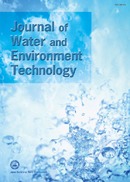Volume 13, Issue 2
Displaying 1-8 of 8 articles from this issue
- |<
- <
- 1
- >
- >|
Original Papers
-
Article type: Original Paper
2015Volume 13Issue 2 Pages 99-105
Published: 2015
Released on J-STAGE: April 10, 2015
Download PDF (219K) -
Article type: Original Paper
2015Volume 13Issue 2 Pages 107-118
Published: 2015
Released on J-STAGE: April 10, 2015
Download PDF (497K) -
Article type: Original Paper
2015Volume 13Issue 2 Pages 119-130
Published: 2015
Released on J-STAGE: April 10, 2015
Download PDF (1781K) -
Article type: Original Paper
2015Volume 13Issue 2 Pages 131-140
Published: 2015
Released on J-STAGE: April 10, 2015
Download PDF (252K) -
Article type: Original Paper
2015Volume 13Issue 2 Pages 141-152
Published: 2015
Released on J-STAGE: April 10, 2015
Download PDF (640K) -
Article type: Original Paper
2015Volume 13Issue 2 Pages 153-166
Published: 2015
Released on J-STAGE: April 10, 2015
Download PDF (459K) -
Article type: Original Paper
2015Volume 13Issue 2 Pages 167-178
Published: 2015
Released on J-STAGE: April 10, 2015
Download PDF (413K) -
Article type: Original Paper
2015Volume 13Issue 2 Pages 179-194
Published: 2015
Released on J-STAGE: April 10, 2015
Download PDF (844K)
- |<
- <
- 1
- >
- >|
